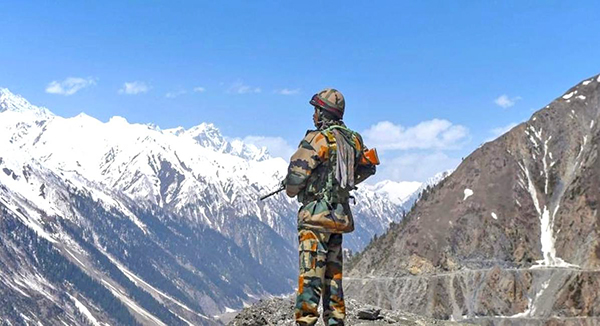The Covid-19 pandemic has created a global crisis of monumental proportions. The global economy has taken a serious knock. Some experts peg it as even worse than the Great Depression of the 1930s. Some 6 million people have been afflicted globally and well over 380,000 have died.
China, today, is a nation under siege. It sees itself as being pressurized in Hong Kong, Taiwan, Xinjiang and Tibet. The ceasefire negotiated with USA in the trade war is in tatters. The nations of the world got together to seek an inquiry into the Covid-19 crisis and its origins. Nations want to re-engineer the global supply chain in a post-Covid world. Some 1,000 multinational companies want to shift the factories out of China.
One may have thought that China would be guilt-ridden and defensive. To the contrary, it is blustering and boorishly aggressive. It is flexing its military muscles to an extent that leads one to wonder whether it sees the coronavirus crisis as a global opportunity to secure its interest by military means. Chinese military assertiveness is causing serious concern. It seems to suggest a level of foreknowledge and preparation for the pandemic. In this issue we have dispassionately analysed China’s very aggressive behaviour around its periphery.
In the Western Theatre, the Chinese made a surprise move in the confluence of Shyok and Galwan rivers (which is just 5 kms from the Line of Actual Control) – intruded 3 kms inside an area (where there was no ambiguity about the LAC) in brigade strength and ensconced themselves on the heights dominating our road. Another brigade moved into the Finger 4 area from Finger 8, north of Pangong Tso lake, which witnessed very dirty scuffles involving iron rods, sticks wound with barbed wires and stones. India retaliated in kind and matched the buildup of force levels. Both nations brought up tanks and heavy artillery. The third area of intrusion was the Hot Springs and Chip Chap region. The fourth was Nakula in North Sikkim, where equally ugly clashes erupted on 9 May 2020.
The only saving grace was the guns were silent as they have been since 1967. There was no kinetic action and no shots were fired in anger, so far. It could change. Military commanders net at the Lt Gen level. The Chinese ambassador made conciliatory noises in Delhi and both sides politely turned down President Trump’s offer of mediation.
So why did China do all this? Is China serious about conflict or just posturing for aggression at a higher level? What are her aims? IMR has analysed these aspects in depth. We feel these are as follows:
Grand Strategic Level. Warn India to desist from aligning too closely with America in the Second Cold War and taking advantage of China’s economic problems in terms of trying to host foreign industries seeking to relocate their factories from China.
Theatre level. Deter India from changing the existing status quo in Jammu & Kashmir with regard to Pakistan Occupied Kashmir (POK) and Gilgit-Baltistan (the China-Pakistan Economic Corridor passes through this area). The Aksai Chin road (NH 219 linking Tibet with Xinjiang) is a prime concern. China is warning India to desist from any military action which could threaten these vital arteries.
Collusive Support to Pakistan. Pakistan had been cowed down once India retaliated with an air strike at Balakot (post-Pulwama carnage). China had then done nothing more than hold a few exercises in Tibet with live ammunition. China now seems all set to encourage Pakistan to resume its asymmetric adventurism in Kashmir. Pakistan has significantly upped the ante with over 1300 ceasefire violations this year, infiltration attempts and terror strikes in Handwara and Pulwama. In fact, a Pulwama improvised explosive device (IED) redux was narrowly foiled recently. Pakistan’s latest boldness is surprising and can only come from Chinese instigation.
Instigating Nepal. Nepal’s prime minister KP Sharma Oli is fast becoming the Ceausescu of Nepal. To save his regime from serious graft and corruption charges, he is trying to divert national attention by raking up a border dispute in Darchula-Lipulekh area (where also a new road has been constructed). The Chinese ambassador in Kathmandu spent lavishly to save Oli’s tottering regime and Oli is paying back.
India’s Options
Would China like to put itself in a two front situation with things hotting up in Taiwan and South China Sea? We do not think so. However, we cannot equally accept a Kargil redux, which threatens a new road axis to DBO we have taken so long to build up in our own territory. What is the point of a road if we cannot secure it? This cannot be done by fist cuffs and brawls. So what are the options?
Please read our assessment and options in the lead article.


















